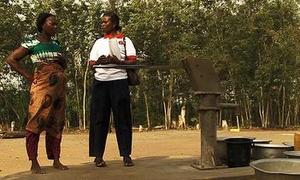To monitor emerging change in the WASH sector, Triple-S experimented with SenseMaker®, an innovative monitoring method. A new report analyses why this was not successful and presents lessons learned.
Published on: 17/03/2014
Between January 2011 and September 2012 the Triple-S project, led by IRC International Water and Sanitation Centre (IRC)—piloted the use of SenseMaker® as a monitoring and engagement tool. This innovative method was used in Ghana, Uganda and at international level to monitor changes in policy, practice and discourse. SenseMaker® relies on the collection and analysis, over a set time period, of large numbers of story fragments, or micro-narratives, which capture people’s diverse perspectives.
Following an 18-month period of adapting, pre-testing and conducting two rounds of data gathering and analysis, Triple-S discontinued the use of SenseMaker®. A working paper on SenseMaker® documents the experience, explains what worked and what didn’t and analyses why SenseMaker® proved an unsuitable method in the context of the Triple-S project. The report also aims to contribute to the debate on improving the relevance and validity of innovative monitoring approaches.

People’s experiences can help us understand what is working and what isn’t in rural water supply, where there are gaps and where there are emerging solutions. SenseMaker® provides a way to capture and understand complex, non-linear change processes. It values personal experiences and allows us to analyse these statistically based on people’s own signification of their stories.
SenseMaker® was expected to enable the Triple-S teams to monitor how sector professionals embrace change towards the uptake of a service delivery approach. At the same time the method would provide information on user satisfaction with water services in the areas in which Triple-S was active. The project teams aspired to establish an innovative monitoring resource that other water sector actors could use and for joint tracking of improvements in water service delivery over time and in diverse settings.
With support from certified SenseMaker® practitioners, Triple-S staff designed and implemented story-collection campaigns at community, district, national and international levels. Teams collected a total of 1,256 stories in Ghana, 390 in Uganda and 120 from international sector stakeholders. Story tellers answered supplementary questions to add meaning and detail to their story. Further joint sense-making was needed in order for patterns emerging from the stories to become meaningful.
In using SenseMaker®, teams encountered challenges including those relating to the specific and sophisticated capacities needed to apply the method, and design of the method in the context of this project; Promised functions were not available in beta form at the time when the project would have benefited from them.
According to Deirdre Casella, leader of the Triple-S learning work stream “Project teams were enthusiastic and put in a lot of effort to understand and use this new monitoring method, but they faced challenges around its appropriateness and ability to meet the project’s needs”. This was compounded by unclear communication lines between Triple-S and Cognitive Edge, designers of the method. As concern about the lack of unique insights or meaningful patterns grew, teams eventually discontinued the use of SenseMaker®.
Despite the unsuccessful attempt to apply SenseMaker® as a monitoring method for Triple-S, it is not dismissed as a useful method. Other development sector initiatives have used SenseMaker® as a key diagnostic and research method with promising results emerging in relation to decision making.